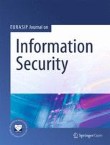Research on fault diagnosis system of hall for workshop of meta-synthetic engineering based on information fusion
By analyzing multi-sensor information fusion system and hall for workshop of meta-synthetic engineering (HWME) essentially, a universal information fusion system of HWME based on multi-sensor is put forward. A...
